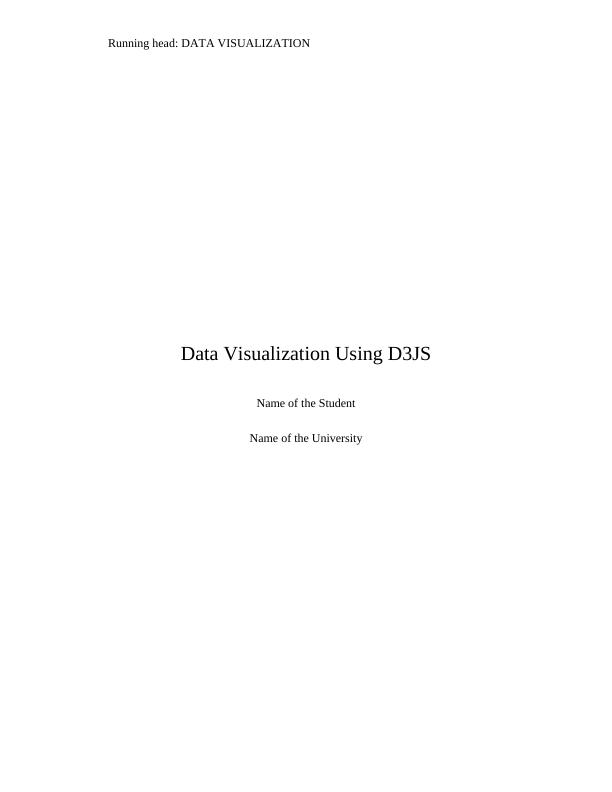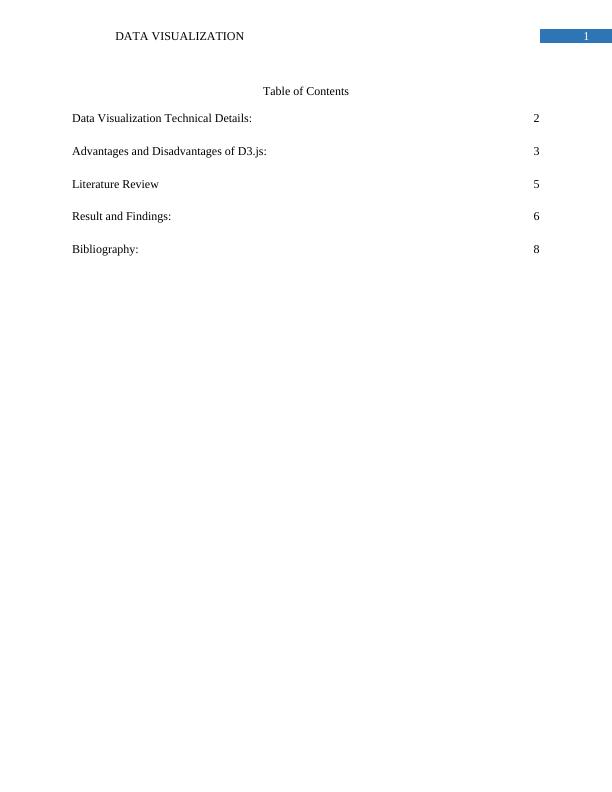Data Visualization Using D3JS
Develop visualisations for relational datasets using existing tools or software and write a report discussing the technical details, advantages and disadvantages, effectiveness for large data relational datasets, analysis results and findings, and critical thinking on the visualisations.
10 Pages2122 Words395 Views
Added on 2023-06-12
About This Document
This article discusses the technical details, advantages and disadvantages of using D3.js for data visualization. It includes a literature review and findings from a web application that used D3.js to visualize data from the 2016 Olympics. The article covers D3.js properties like selections, transitions, enter and exit, and data binding.
Data Visualization Using D3JS
Develop visualisations for relational datasets using existing tools or software and write a report discussing the technical details, advantages and disadvantages, effectiveness for large data relational datasets, analysis results and findings, and critical thinking on the visualisations.
Added on 2023-06-12
ShareRelated Documents
End of preview
Want to access all the pages? Upload your documents or become a member.
Dynamic Web Programming: Creating a RESTful JSON back-end API using PHP
|6
|547
|114
Improving Personalization and Customization of Web Applications with Bootstrap and MontageJS
|12
|911
|47
Critical Report on the Development of Tribute Website using HTML5 and CSS3
|5
|1517
|417



